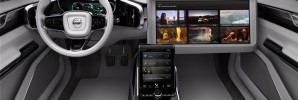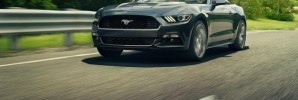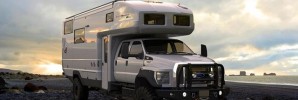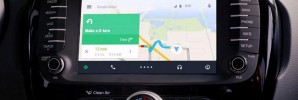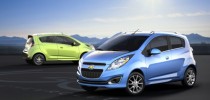Reviewing the 2013 Hyundai Santa Fe
Up front, Hyundai added a fourth chrome bar in the grille (compared to the Sport’s three) and altered the shape of the driving lights at the bottom of the fascia. The sides of the Santa Fe are heavily sculpted, as is Hyundai’s recent tradition, with an upward swing in the shoulder lending a stylish look that does impede a bit on the airiness of the cockpit.
There’s not a whole lot to see at the rear, other than the standard dual exhaust tips and the power tailgate, with large light clusters stretching from the car’s rear flanks across the liftgate. The Santa Fe sure looks a heck of a lot more stylish than the outgoing seven-passenger Veracruz, the model that this ostensibly replaces, albeit at a more affordable price point.
All the surfaces your body will touch are soft, though it’s not very difficult to find harder bits where Hyundai doesn’t think you’ll notice. Plus, there are at least five different finishes inside, including various grades and shades of plastic, leather and wood, along with some pieces that sport a metallic sheen. While all of them are fine in and of themselves, together they are a bit much. All in all, though, the interior is a pleasant place to be.
There’s plenty of Technology inside as well, with BlueLink coming standard and a year’s worth of complimentary service. BlueLink includes voice text messaging, point-of-interest search capability and turn-by-turn navigation, plus extras like restaurant ratings and weather information. Users will also get monthly updates on the status of their vehicles. For added convenience, the system can remotely lock or unlock the car, remotely start its engine and alert the owner if the car’s alarm goes off.
An eight-inch multifunction display in the middle of the dash is optional. If you don’t opt for the display, you’ll get a much smaller 4.3-inch touchscreen unit that looks out of place considering that the dash is obviously designed for the larger unit. You’ll need $4,000 to get the Leather and Navigation Package on the GLS model or $2,900 for the Technology Package on the Limited to get the large screen.
The less-expensive GLS boasts standard seven-passenger capability. The Limited, on the other hand, comes with bucket seats in the second row, reducing total passenger capability to six and adding standard leather seating surfaces. It’s not possible to get the bucket seats on the GLS or the second-row bench on the Limited.
the third row is a fairly pleasant place for passengers. Hyundai gave back seaters their own control panel for heating and ventilation, going so far as to include a separate compressor for the third row, with well placed vents for the way-back passengers. Second-row passengers also make out with the Santa Fe – compared to the Santa Fe Sport, the extended model picks up 1.9 inches of second-row legroom.
Desirable features including heated front and rear seats and steering wheel are optional. If cloth is selected, Hyundai uses stain-resistant YES Essentials fabric standard. A 12-speaker surround-sound audio system from Infinity can be ordered on Limited models, while Bluetooth connectivity joins the expected AM/FM/CD/HD/SiriusXM/MP3 capabilities as standard equipment across the board.
It comes with the standard 3.3-liter V6 engine and six-speed automatic transmission. This unit is impressive, offering up 290 horsepower and 252 pound-feet of torque. Compared to its rivals, those are very good figures. For instance, the 3.5-liter V6 in the Toyota Highlander offers up 270 hp and 248 lb-ft, the Nissan Pathfinder features a 3.5L with 260 horses and 240 lb-ft, and the Honda Pilot’s 3.5-liter engine is rated at 250 hp and 253 lb-ft.
The 2013 Hyundai Santa Fe weighs 3,933 pounds. That means each of the engine’s horses is hauling 13.6 pounds. For comparison, the Highlander’s 4,045 pounds put 15 on each of its horsepower, thePilot is saddled with 17.2 pounds per horsepower due to its heavy 4,306-pound weight and the Pathfinder’s V6 moves 16 of its 4,149 pounds with each horse underhood. Less weight and more power.
Fuel mileage is competitive for its segment, with the 2013 Santa Fe earning EPA-estimated ratings of 18 city, 25 highway and 21 combined. The Nissan Pathfinder is the only vehicle with appreciatively better efficiency, with ratings of 20/26 and 22 combined.
The one place where you’ll see and feel the difference between the Santa Fe and the Santa Fe Sport is in your wallet. While the five-passenger model starts at $24,450 (albeit with a four-cylinder engine), the upsized seven-passenger Santa Fe starts at $28,350 in GLS trim and $33,100 in six-passenger Limited trim. All-wheel drive adds $1,750 to the bottom line on either trim, and don’t forget to tack on $845 for delivery.

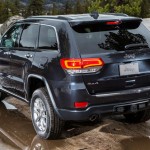 Meet The New 2014 Jeep® Cherokee
Meet The New 2014 Jeep® Cherokee  Car Review: Nissan Altima 2013
Car Review: Nissan Altima 2013  Normal Cars that Need Premium Gasoline
Normal Cars that Need Premium Gasoline  Mercedes SLS AMG: Electric and Utterly Expensive
Mercedes SLS AMG: Electric and Utterly Expensive 